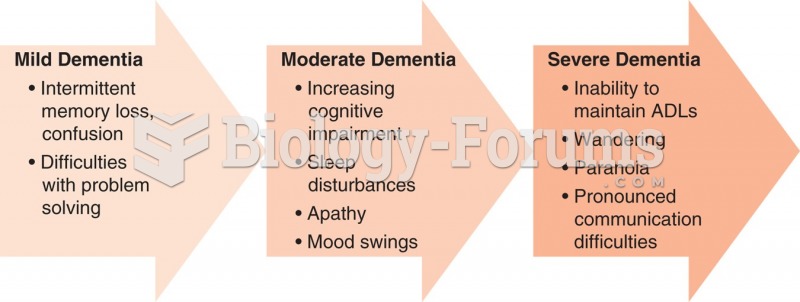Answer to Question 1
The autoimmune reaction that occurs when gluten is eaten damages intestinal villi.
Damaged villi do not effectively absorb nutrients.
Without functioning villi, they will flatten and malnutrition will occur.
The anatomy of a normal small intestine is composed of villi or finger-like projections throughout the lumen.
Exposure to gliadina component of glutenresults in an inflammatory process that damages the small intestine, resulting in decreasing villus height.
A flat mucosa with villus atrophy indicates the absorptive surface of the small intestine is nonexistent.
Between each pair of adjacent villi is the area called the crypt, which is a small glandular tube at the base of the villus.
Absorptive cells or enterocytes enter the villus from the crypt.
Reduced absorptive surface area and loss of digestive enzymes follows damage to the enterocytes.
Adequate villus height and normal proliferation of enterocytes are significantly affected by nutritional status.
If a patient is malnourished or adequate fuel is not available to the small intestine, the villi shorten and the replication of enterocytes is decreased.
Answer to Question 2
The following are possible PES statements. It may be helpful for students to initially write more than two nutrition diagnoses and then prioritize as to the ones that are most likely to have immediate nutrition interventions.
Upon admission:
Inadequate oral food/beverage intake related to decreased appetite over past several weeks as evidenced by only sips and bites of food at meals and no between-meal snacks
Inadequate protein-energy intake related to decreased appetite over past 2 weeks as evidenced by estimated intake of 113 kcal and 10 g of protein from 24-hr recall compared to recommended intake of 1600-1700 kcal and 67-83 g protein
Underweight or Involuntary weight loss related to inadequate energy intake as evidenced by current weight of 122 pounds compared to UBW of 135 pounds (demonstration of critical thinking by students would note that 122 pounds may be inaccurate based on presence of edema)
During hospitalization:
Inadequate intake from enteral/parenteral nutrition infusion related to intolerance demonstrated by high residuals as evidenced by only 400 mL delivered before discontinuation providing only 480 kcal and 17 g protein compared to recommended intake of 1600-1700 kcal and 67-83 g protein
Excessive intake from enteral/parenteral nutrition infusion related to infusion of both Isosource at 50 mL/hr and ProcalAmine at 100 mL/hr as evidenced by calorimetry RQ of 0.95 and increased production of CO2







